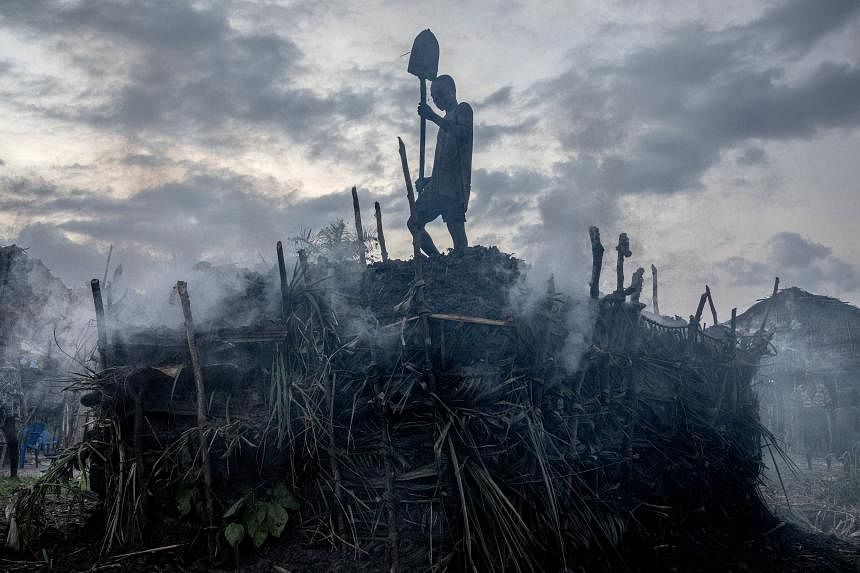SovanNguon - Thursday
A 60-centimeter-high sandstone Asura head statue was unearthed in front of the south gate of the Angkor Thom temple in Cambodia's famed Angkor Archaeological Park.
The sandstone statue, which is centuries old, is being preserved at the Preah Norodom Sihanouk-Angkor Museum, and the conservation team will continue to find its original body.
PHNOM PENH, Oct. 21 (Xinhua) -- A centuries-old sandstone Asura head statue has been discovered in front of the south gate of the Angkor Thom temple in Cambodia's famed Angkor Archaeological Park, the APSARA National Authority (ANA) said in a news release on Thursday.
Asura is a demigod, titan or antigod, according to the context. They exist in both the Hindu and the Buddhist religions.
Chhouk Somala, head of the registration team of the ANA's Department of Conservation of Monuments and Preventive Archaeology, said the Asura head statue was found on Wednesday at the location of the former souvenir stalls in front of the south gate of Angkor Thom.
"At first, our team dug 30 to 40 cm deep and found three pieces of ancient stone, then they washed, and assembled them to become the Asura head," he said in the news release.
The Asura head statue is 60 cm high, 65 cm wide, and 59 cm thick, he said, adding that the Bayon-style statue had been built simultaneously with the Bayon temple during the reign of Jayavarman VII in the late 12th century and early 13th century.
Currently, the statue is being kept at the Preah Norodom Sihanouk-Angkor Museum, he said, adding that the team will continue to find its original body.
Located in northwest Cambodia's Siem Reap province, the 401-square km Angkor Archaeological Park, which was inscribed on the World Heritage List of the United Nations Educational, Scientific and Cultural Organization (UNESCO) in 1992, is the most popular tourist destination in the Southeast Asian nation.
Prior to the COVID-19 pandemic, the ancient park attracted up to 2.2 million international tourists in 2019, earning a gross revenue of 99 million U.S. dollars from ticket sales, according to the state-owned Angkor Enterprise.
The ANA said that tourists have started visiting the Angkor site again after the COVID-19 pandemic has waned.
"This is a sign that the growth of tourists will return to normal after the absence of tourists for two years due to the COVID-19 pandemic," the ANA said. ■














